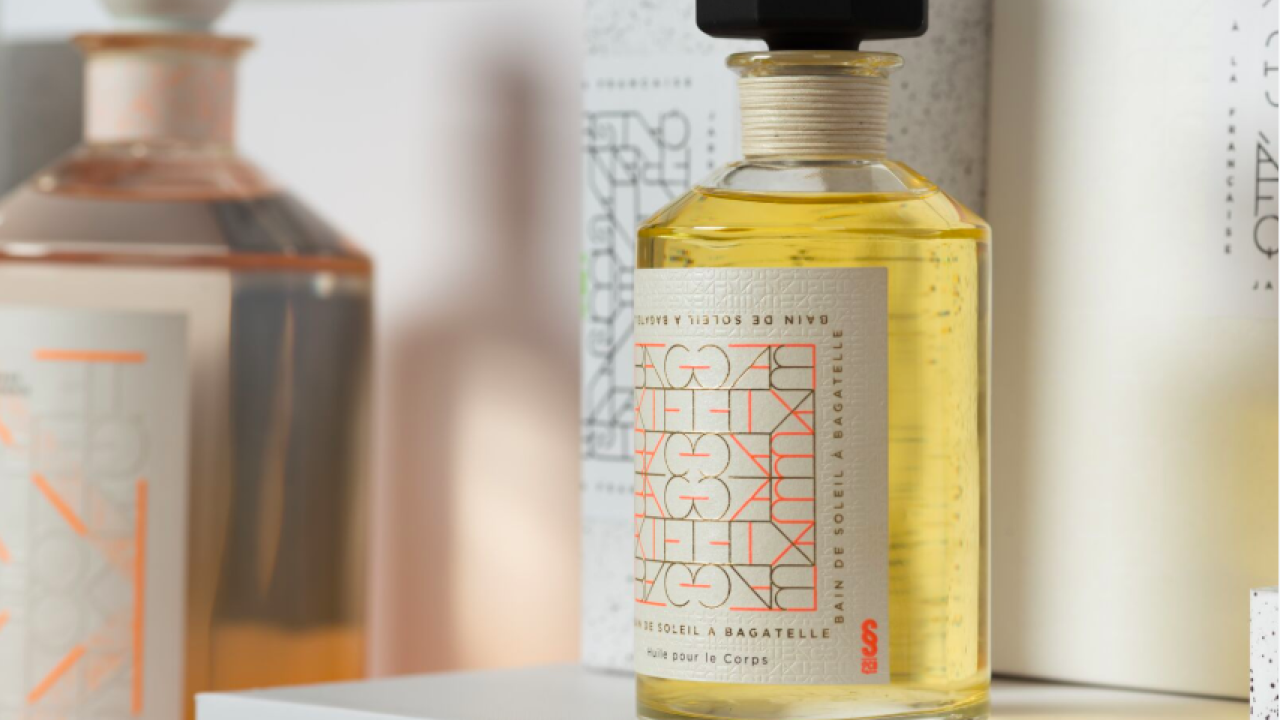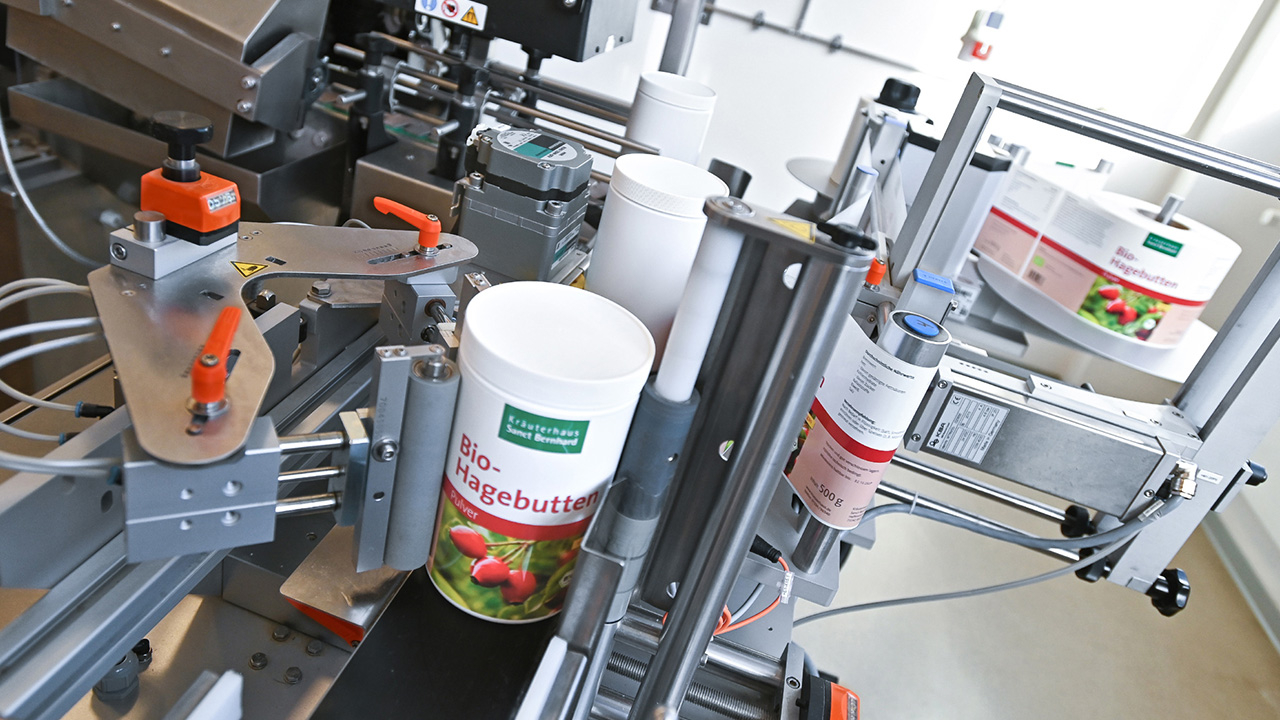The changing face of cosmetics

Other contributors to growth of cosmetics include an ageing population looking for anti-ageing products; growth in the male grooming market; and a growing beauty conscious population in emerging economies, where disposable incomes are increasing.
Citing figures from the L’Oréal Annual Report 2016, self-adhesive substrate specialist Arconvert notes that the worldwide cosmetics market had an estimated value of €205 billion EUR ($254 billion USD) in 2016, with the global cosmetics packaging market predicted to exhibit steady growth over the next 10 years.
Cosmetics have also experienced an acceleration of online sales, according to Arconvert SpA marketing manager Chiara Tomasi. Ian Renton, owner of Australian printer Renton’s Labels, says: ‘The internet and digital label printing technology have altered the cosmetics industry forever. No longer do the big players have it all to themselves. There are lots of smaller suppliers that provide unique products that compete well with traditional cosmetic products. There are more participants, so more products in the cosmetics industry. Marketing is also easier today than ever before. The internet and social media make it possible to sell large volumes of cosmetic products without the assistance of large supermarkets and other retailers.
‘Label printing suppliers such as ourselves have to provide the technology to keep up with the trend for more products and smaller print runs.’
Renton’s Labels prints many cosmetic labels on a Xeikon 3030 toner-based digital press, with some other jobs produced on the Epson Surepress L4033 inkjet press.
The UK’s Amberley Labels, a fellow stalwart in the digital label printing industry through its use of HP Indigo technology, sees smaller, high-end brand owners as having far more stringent requirements when it comes to the labels and packaging for their premium products.
Amberley Labels managing director Trevor Smith says: ‘You’ve got to have extremely high production standards, from print quality and color consistency, to cut performance and reel integrity. Everything has to be as close to prefect as possible.’
Smith adds that working with such specialist brand owners requires the ability to handle a high number of SKUs, low minimum order quantities and very short run lengths. ‘The meterage of finished labels for some orders can be eight or nine meters, so you’ve got to be able to handle small orders.’
Renton reports similar, saying: ‘It is not uncommon for us to receive print requests for 20 different cosmetic labels in relatively short runs. There are sometimes different sizes for the same product and there are also many more products.’
Technical challenges
Tomasi notes: ‘Today, more than ever, the bathroom is the center of our psycho-physical wellbeing. We love everything that makes us feel good and – even in our bathroom – and we love to surround ourselves with beautiful things that stimulate our senses. However, if the bathroom is the most enjoyable and relaxing room in the house, it is certainly the most hostile to our objects, which are constantly endangered by the risk of stains and condensation.
‘That is why the cosmetic packaging industry should be able to respond simultaneously to two conflicting needs: to seduce vision and feel, generating desire and emotions on the one hand, and ensuring functionality and ease of use on the other.’
Labels may come in contact with the actual product and in some cases come in contact with water, Renton explains. The products are also kept for a period of time, sometimes many months, where a durable stock is recommended. This makes choosing the right stock one of the biggest challenges in printing cosmetic labels.
‘Our preferred stock is a synthetic label with a laminate or varnish. A laminate can be used for hand application. A varnish covering has the advantage of being thinner so it easy for machine application and more suitable for smaller labels on small cosmetic jars or tubes.
‘We help a lot of start-up cosmetics companies so we always recommend that new clients get their plastic containers, glass jars or tubes prior to ordering their labels so the labels can be tested on the actual product before printing begins. We often provide samples of multiple stocks.’
Amberley produces around 70 percent of its cosmetics labels using synthetics, ‘although this might change with the drive to move away from plastics’, notes Smith.
Alongside self-adhesive films, Arconvert sees inherent advantages in the use of self-adhesive papers, particularly when compared to decoration using screen printing. These include: cost, in both tooling and order size; environmental benefits in production; waste reduction; versioning, which is more easily facilitated by digital label printing; and creative and finishing options.
‘When consumers see or touch a paper label, the natural aspect of the paper instantly evokes a conceptual connection with nature so as the label becomes a sensorial access to the product and the brand,’ says Tomasi. ‘Touch creates symbolic connections between people and products, and between buyers and sellers. So, to physically hold and touch a product can create a sense of psychological ownership, driving must-have purchase decisions.’
In terms of format, peel and reveal, and multilayer labels are a big part of Amberley’s production for the cosmetics market. For Renton, ‘there is a reasonable demand for clear labels so the impression is given that there is no label and the printing is done directly onto the container.
‘Clear labels do create a challenge, as black and other dark colors are more suited to clear labels than lighter or pastel colors.’
‘Registration is really important for the cosmetics industry because many cosmetic products come in small containers,’ he adds. ‘These products require small labels so the registration must be perfect to be able to read the fine print on cosmetic labels and for retail outlets to be able to read the barcodes on such labels. It is much more challenging to print a high-quality label on a small lip balm plastic tube than it is on a bottle of wine.’
High end finishes, foils, embossing/debossing and such, are increasingly in demand. Adhesive bleed is a further important consideration, says Smith. ‘As these are small labels, there is a high ratio of edge to surface area so controlling adhesive bleed is critical. You must be able to advise on this, right through storage and application.’
For RFID specialist SML, which recently identified cosmetics and fragrance as one of six tangential markets to benefit from its RFID expertise (see boxout), the nature of cosmetic packaging poses a major challenge, as Dean Frew, SML chief technology officer, explains.
‘A lot of packaging in that segment has materials that can be unfriendly to RFID, where metal and foil in the packaging, or bright, shiny surfaces, cause a challenge.’
SML is working with manufacturers to come up with a tag and placement strategy to overcome such issues while matching the objective of the retailer. SML also has a packaging division, SML Retail Package Design, building RFID-friendly packaging for the cosmetics and fragrance market.
Frew notes that there are multiple ways to get around it, ‘but we have to be more intentional going forward. Most packaging in this segment is not designed with RFID in mind, so it’s an evolution for the industry.’
Beyond printing
Such level to detail and scrutiny on production is supported by services before the labels even reach the press.
Renton says: ‘Since many of our customers are medium sized businesses or in some cases start-ups, they really need help with not only the label printing and design but also the legal side. The cosmetics industry is constrained and rightly so by legal issues. I do not have a legal background but am happy to refer our customers in Australia to government websites to more easily help them comply with labelling and packaging laws. Our customers can also get up-to-date information on marketing their products and other issues about labelling by reading my regular blogs.’
Renton’s Labels offers graphic design services as well as printing. ‘We actually prefer it when we get involved in the label design because some of our smaller companies occasionally employ graphic designers that send artwork without bleed or crop marks so we find we need to fix artwork on several occasions.
Amberley engages with customers on a number of levels, with a studio, quality assurance, technical teams and customer service department geared to helping its customers get the most out of their labels.
Smith makes clear that to get on in the premium cosmetics market, you’ve got to be ready to invest time and resources. ‘Working with such demanding clients is a barrier to entry.’
Stay up to date
Subscribe to the free Label News newsletter and receive the latest content every week. We'll never share your email address.


